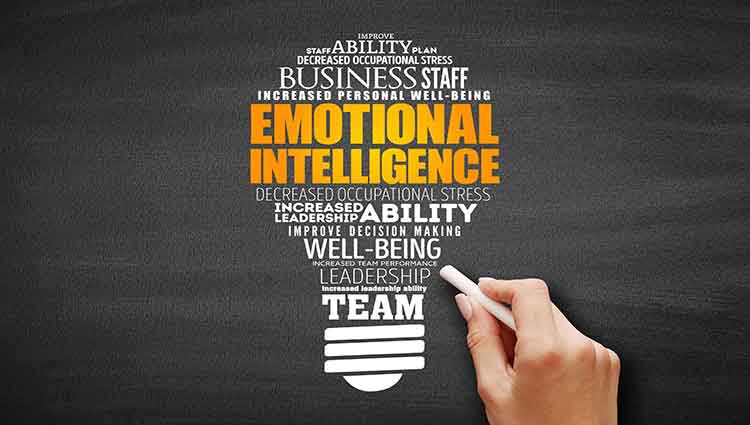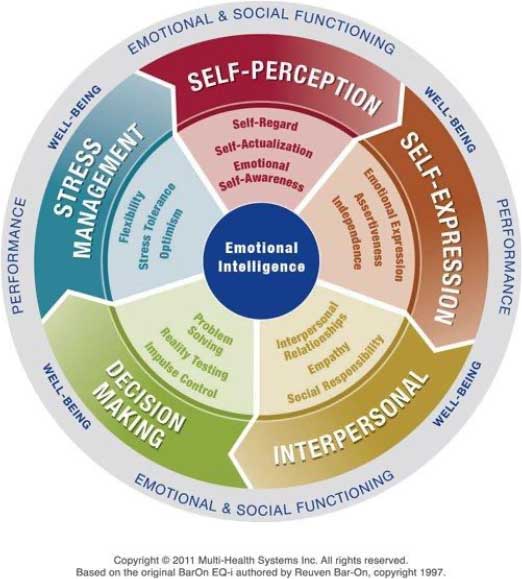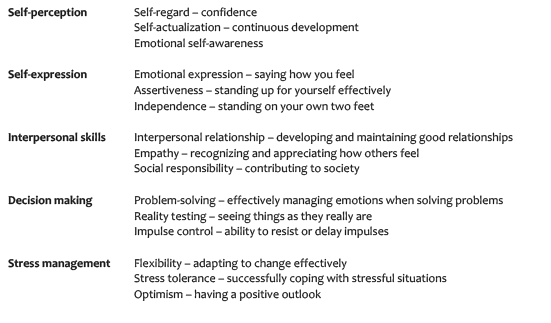
As a campaign consultant and major gifts coach, I have experienced many rewarding moments among top philanthropic donors and nonprofit leaders. If you are reading this article, you likely fit within one or both of these populations and understand that, as Winston Churchill once said, “We make a living by what we get, but we make a life by what we give.” We staff and volunteers proudly classify ourselves as the bleeding hearts of society, waking each day to find what good the world can bring to those in need. We find great fulfillment in simply making a difference. That said, in every major gifts operation there are a few key factors that will either foster success or precipitate repeated frustration. In this brief, light, and digestible rant, I will define emotional intelligence and the role it plays in several aspects of successful major gifts management.
For the sake of creativity, let’s relate this conversation to our time spent in the kitchen. Have you ever set out to make an incredible recipe, gathered all the right ingredients and supplies and begun your process only to find that you forgot one ingredient? In the interest of time, you tried that recipe sans the missing ingredient, or perhaps, you experimented with a replacement option for the first time. After all, it’s just one ingredient, right?
But using the shortcut made the dish a flop, and you couldn’t fix it. In reflection, as you look at your not-so-culinary masterpiece, you thought to yourself: I should have paused and taken the time to head to the store to get that one key ingredient.
This kitchen analogy translates to Nonprofit Organizations (NPOs) all over the world as they build teams and strategies to acquire major gifts. In my 24 years of NPO experience, and most recently, in my past ten years of consulting, the one key ingredient I have found in the recipe for success is Emotional Intelligence, widely known as “EQ.” And like most special ingredients, it is either in place, poorly substituted, or noticeably lacking.
Our business of fundraising to build thriving major gift programs is approximately 20% technical (data, research, business and strategic plans, collateral materials, and social media) and 80% interpersonal skills. Because relational skills are required for overall success, we must recognize the importance of empowering our charitable leaders with an understanding of EQ and its role in a successful and thriving NPO.
We will first define EQ as it is globally understood — and often misunderstood. Next, we will review two of the most common scenarios (of which there are many) where the lack of EQ leads to larger issues. Finally, we will explore solutions and precautions to ensure your operation and organization is well-stocked with a heaping portion of EQ in its recipe for a thriving major gifts program.
The term emotional intelligence is often misused and often misinterpreted. For the sake of a shared understanding, let us define this concept as “one’s ability to observe, detect, and categorize one’s own emotions as well as those of others, while using this information to inform one’s decisions, thinking, and behavior.” Historically speaking, the term “emotional intelligence” (EI) dates to a 1964 paper authored by Michael Beldoch, but the concept really caught the public’s attention in the last couple of decades as a result of Daniel Goleman’s best-selling book, Emotional Intelligence: Why It Can Matter More than IQ (1994). It presented the idea that something other than raw intelligence was a better predictor of success and interpersonal skills. Compelling thought and the concept of this new form of “intelligence” started out somewhat amorphously in its previous incarnations, and many people have sought to create a model for studying what, exactly, emotional intelligence is.
Another term that emerged out of this process was EQ (or Emotional Quotient, like Intelligence Quotient) as a rubric for measuring aptitude. Definitions of emotional intelligence vary, however, as it is still very much an evolving field; models for gauging emotional intelligence continue to be refined and explored today. (Ramsay, Doug. “Emotional Intelligence: A History and Definition.” Adventure Associates, February 2, 2017.)


The “I Can Do It All” leader is a talented and resolute NPO leader who exhibits traits of excellent leadership and loyalty over several consecutive years of proud service to their respective cause. However, with this leader’s strength, there is also an undercurrent of discontent. Stress from overwhelming demands and anxiety about annual fiscal goals drive these executives to maintain total control of all aspects of the organization’s initiative. As a result, these leaders hold as many eggs in their basket as possible. Tucked in this crowded basket are the donors who are the primary relational element of the equation, so subsequently, managing their personal needs should be assigned to staff and board members who can be specifically tasked and trained to manage these relationships effectively. Because “I Can Do It All” leaders do not properly delegate, donors can become just another box to check on the daily list and the end result is often dissatisfied donors who are not properly cultivated or stewarded.
The end result is a stalled or declining giving trend that negatively affects the bottom line. Moreover, the consequences of overlooking the value of EQ in managing relationships can affect the team itself as both staff and board members who are eager to learn and to assume more agency in the organization cannot pass the narrow funnel of trust due to this leader’s overly-controlled distribution of tasks. This can and will likely lead to premature staff turnover and board member burnout.
Like the “I Can Do It All” leader, this gift officer is enthusiastic and dedicated, and is very competent and confident in most required tasks. The desire and ability to do the job is not in question for either leader. However, whereas the “I Can Do It All” leader is perhaps exercising overconfidence in their ability, the “I Can Do It Anything but” leader exhibits anxiety about their job security and a subsequent lack of confidence in their ability to do the whole job. They have a strong tendency to fill their day with tasks they have already mastered — often behind-the-scenes administrative duties tasks that conveniently prohibit them from taking the time to connect with donors in a meaningful way.
Does the term “analysis-paralysis” sound familiar? This person knows they need to set and implement strategies for donor outreach, but they lack the basic confidence and tools for execution. Hence, back to the reports and analysis they go, leaving committed donors unconnected and open to alternate charitable pursuits. Similar to Scenario One, the end result likely leads to a decline in giving among these donors and a negative impact to set fiscal goals.
Before we continue, I must confess that throughout my career, I have personally exhibited traits outlined in both scenarios, and I have needed qualified and trusted outside feedback to self-correct. (If one of those colleagues is reading this: thank you!) My takeaway from my own learning process is that EQ is deeply rooted in both evaluating and reconfiguring one’s own leadership style. There is always a need for leaders to carefully discern the assignment of major donors and for gift officers and leaders alike to spend time with accurate analysis and administrative tasks. That said, any leader interested in donor loyalty, increased giving trends and staff retention — and in a productive outcome for both parties — would consider employing EQ strategies.
If you relate to either of these scenarios and feel like you understand what defines Emotional Intelligence, you may be thinking: “Now what? How can I incorporate the best EQ practices to inspire an awareness and application of Emotional Intelligence in my organization?”
While I am proud to say I bring my clients many effective tools for major gift strategies and preparation, I do not have one set, distinct tool in my arsenal to identify, assess, and address EQ. That said, I do have three key suggestions for heightened awareness and improved outcomes where EQ issues in major gift operations often surface.
1. HUMAN RESOURCES: If you are fortunate enough to work with an organization equipped with a dedicated HR team, talk with them about the EQ concept and how the right people with the right skills can positively impact your long-term fundraising goals. Several articles are available online about this topic, and these digestible versions of the topic can help you navigate the conversation. In essence, whether you are the hiring manager or have an HR team in place, prioritize awareness of this concept for future hiring.

2. SELF-AWARENESS: My apologies, as this is the dig-deep and potentially daunting part: After reading and processing this article, give thought to whether you or one of your team members might be struggling with EQ. Assess if this is resolvable by thinking through other external factors like tenure, dedication to mission, and overall productivity. If many of these other factors are actively in place, hope is on the horizon. However, if you or your staff member are lacking many of the key factors for success in that job, ask: Is this lack coupled with a lack of appreciation and openness to self-assess and subsequently learn about principals for EQ for external donor applications? If the answer is yes — or if it is even a maybe — you may consider evaluating the long-term trajectory of this person’s position.
3. EXTERNAL ASSESSMENT & GUIDANCE: This is the hope on the horizon part. Once you have recognized a need to evaluate and assess EQ personally or within your organization, consider engaging with a consultant or outside expert to target these issues and find solutions. Often, solutions are as easy and effective as one-on-one coaching and confidence-building: techniques such as modeling and role playing can be instrumental in illustrating not just what EQ is, but how it works. Many fundraising coaches and executive coaches alike have specified personality assessment tools and training to bring targeted insight into your organization.
In summary, I hope I kept my promise to deliver this article as light, fun, and digestible as possible. Like you, I share a passion for the nonprofit model and the compelling missions we all support. My hope is that you are inspired with a new awareness of and interest in EQ and that EQ’s role in major gift strategies will resonate in further thought and potential action. If you have any insights to share or questions about EQ as conveyed in the context of this article, please visit https://www.barbkappel.com for more information or to contact me directly.
Jennifer Dietrich, Editor

Hands-on, in-the-trenches experience designed to equip you with strategies and skills for success. Choose the one that fits your goals—or take both for maximum results. It’s intense, effective, and built for leaders like you.
Related
800.490-7090
484.680.7800 local
Succeed@MajorGifts.com
Stay Informed!
Webinars, free downloads, tax law changes, more. Subscribe today. You can unsubscribe at anytime.
Copyright 2024 © PlannedGiving.Com
Stay informed with timely news. You can unsubscribe at any time.
Success List